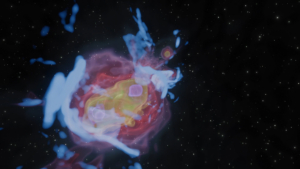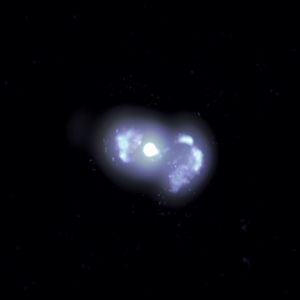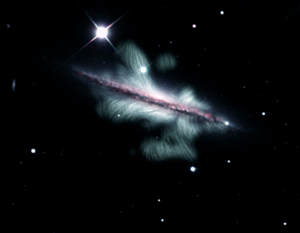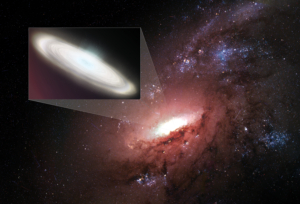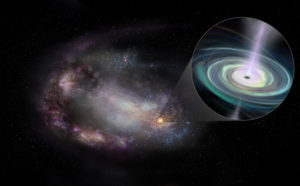Winners in NRAO’s VLA 40th Anniversary Image Contest are from around the world, and their works illustrate a fascinating variety of celestial objects. Entries combined observational data from the VLA with data from optical, infrared, and X-ray telescopes, and from computer simulations.
IMAGE RELEASE: A Galaxy’s Stop-and-Start Young Radio Jets
VLBA image shows details of a young jet emitted from the core of an active galaxy, revealing that the jet activity stopped, then restarted only a decade ago.
IMAGE RELEASE: Magnetic Field of a Spiral Galaxy
A new image from the VLA dramatically reveals the extended magnetic field of a spiral galaxy seen edge-on from Earth.
New Distance Measurements Bolster Challenge to Basic Model of Universe
A cosmic measurement technique independent of all others adds strong evidence pointing to a problem with the current theoretical model describing the composition and evolution of the Universe.
ALMA Discovers Massive Rotating Disk in Early Universe
Galaxy DLA0817g, nicknamed the Wolfe Disk after the late astronomer Arthur M. Wolfe, is the most distant rotating disk galaxy ever observed.
Astronomers Find Wandering Massive Black Holes in Dwarf Galaxies
Studies with the VLA indicate that roughly half of the massive black holes in dwarf galaxies are not in the centers of those galaxies. This gives astronomers new insights into the conditions in which similar black holes formed and grew in the early history of the Universe.






